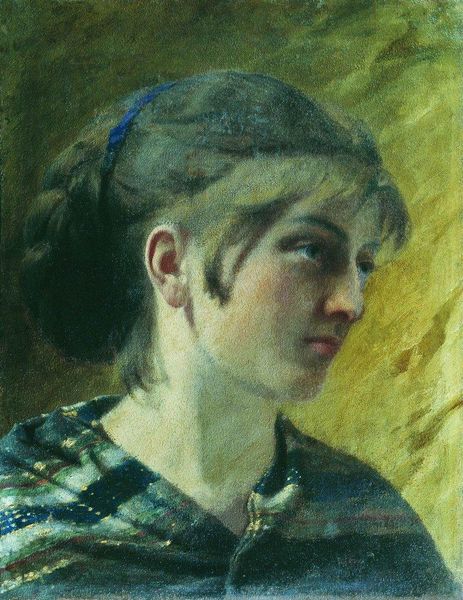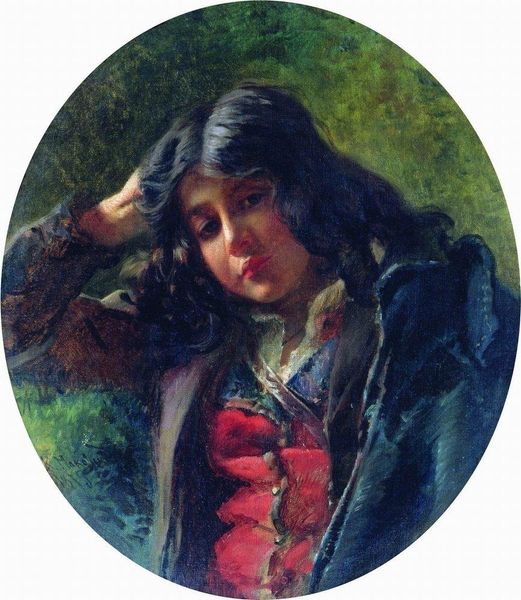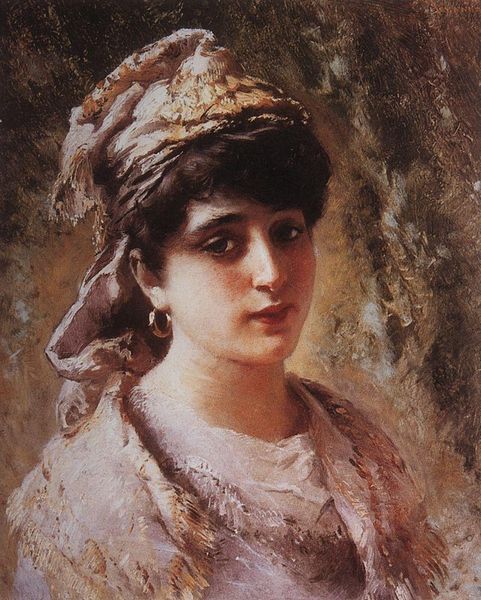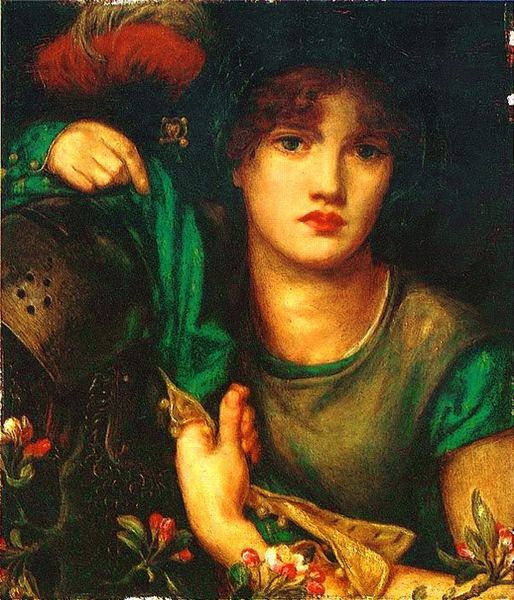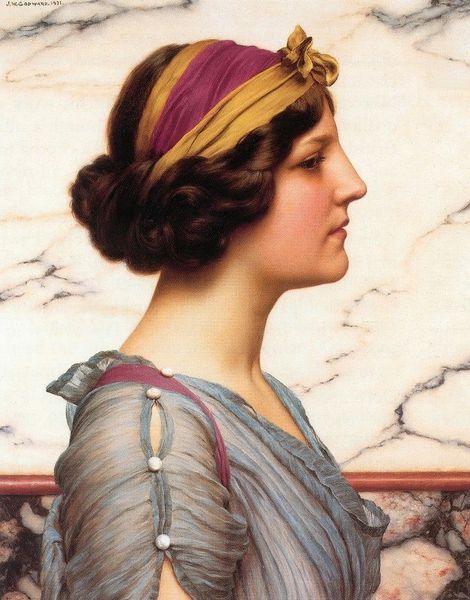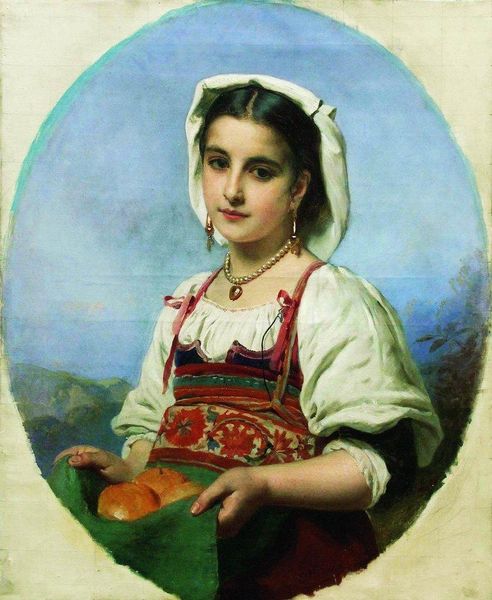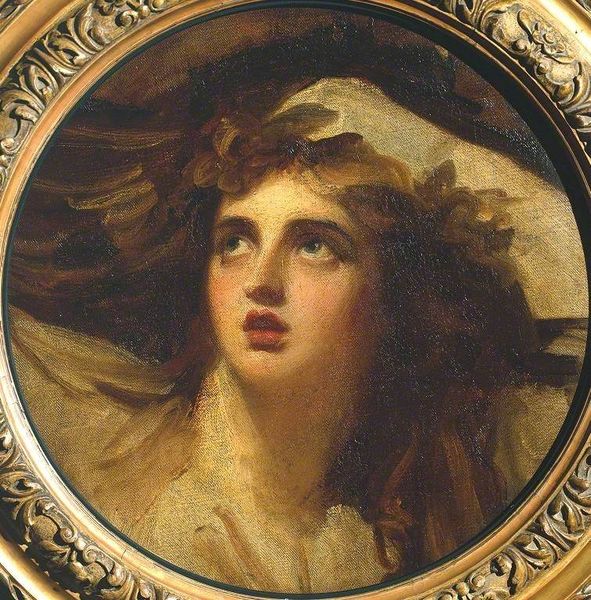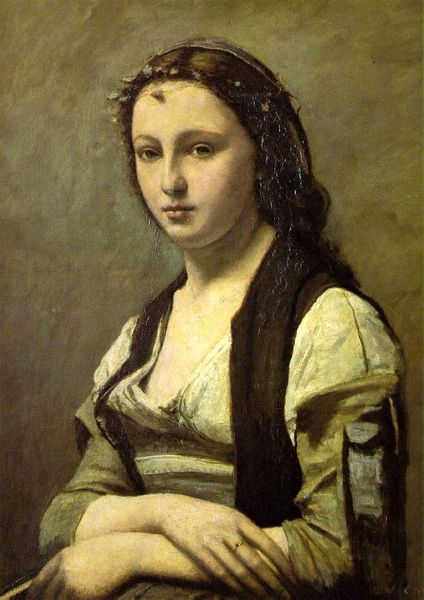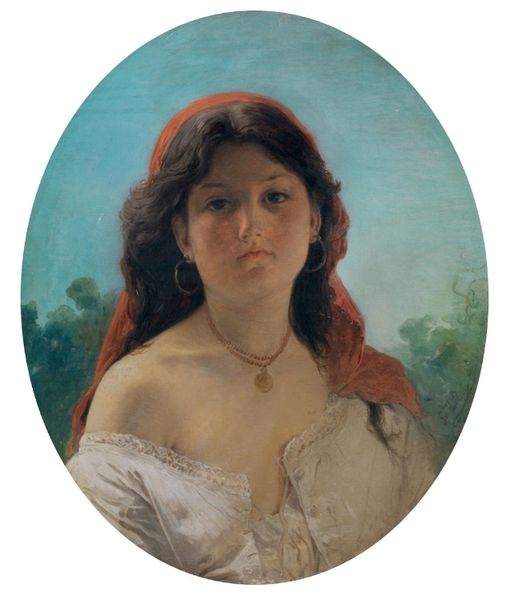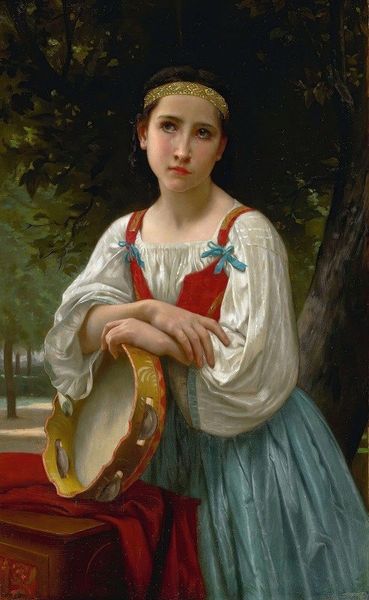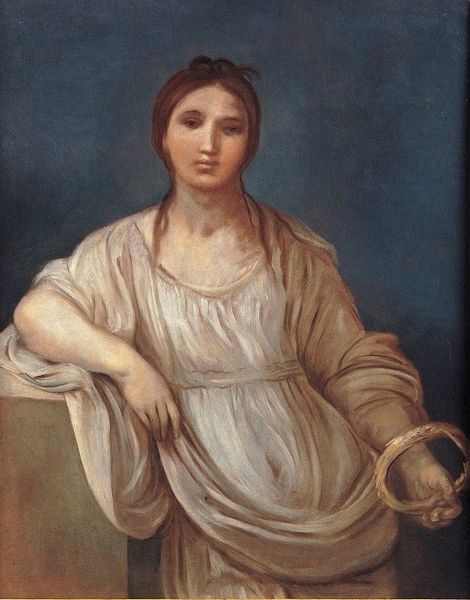
painting, oil-paint
#
portrait
#
painting
#
oil-paint
#
genre-painting
#
academic-art
#
italian-renaissance
#
realism
Copyright: Public domain
Curator: Welcome. We are standing before Fyodor Bronnikov's 1869 painting, "Italian Girl," housed here at the Tyumen Regional Museum of Fine Arts. Editor: It’s a lovely work, evokes a very wistful mood. There is a softness in the gaze of the young woman, in the creamy pastel color palette and it makes for a serene viewing experience. Curator: Precisely. Bronnikov utilizes a subdued realism, evident in the detailed rendering of the girl’s face, and clothing while, in his artistic and theoretical framework, all elements cohere in an academic framework of realism and idealized portraiture. Note how the overall oval shape of the canvas encloses the composition in harmony. Editor: And let's consider that simple headscarf, how it’s not merely adornment, but also indicative of her working-class status and her possible connection to the landscape, perhaps indicating agricultural labor that aligns to social production. I want to know what her work consists of on a day-to-day basis. Curator: An interesting perspective! One cannot overlook how her garments—while rendered realistically— possess a timeless, almost classical quality. The drape of the fabric around her shoulders, for example, suggests an enduring image of innocence and grace, quite removed from mundane labor. It exists within a defined and self-referential pictorial field. Editor: But how might our appreciation shift if we consider who made these textiles and the cost of acquiring these resources? These elements ground the portrait in a complex socio-economic reality. And consider the perspective of the sitter. How was she compensated? Curator: These questions touch on aspects external to the composition itself. By restricting our attention to the elements contained within the picture, Bronnikov invites the viewer to dwell on formal qualities like the distribution of light and shadow, the delicate balance of hues, and the inherent beauty of the subject. The semiotic play is undeniable! Editor: Fair point. But focusing on her clothing gives a sense of time and place, connecting to production—this is not just an "Italian Girl," but someone situated in labor practices that shaped her identity and this cultural moment. Curator: A rewarding insight, indeed. "Italian Girl" is more than a simple portrait, as it engages viewers on aesthetic, material, and ideological levels. Editor: Ultimately, that makes this viewing such an engaging encounter as well.
Comments
No comments
Be the first to comment and join the conversation on the ultimate creative platform.

